Of course, that could be a faulty assumption.
Fallout: New Vegas Official Thread #9
Of course, that could be a faulty assumption.
-

Chloe :) - Posts: 3386
- Joined: Tue Jun 13, 2006 10:00 am
-

Emma Pennington - Posts: 3346
- Joined: Tue Oct 17, 2006 8:41 am
I could go either way as far as the level design goes. (ie, "everything on one map," or "Indiana Jones-style travelling,") personally. It doesn't really matter to me too much either way. I mean, you can have just as a good a story over a relatively small and confined area as you could in a large series of interconnected nodes.
Small and confined is the problem here, for folks who want to explore. If small and confined describes FO1/2 aareas, then forget it. If small and confined equates to Point lookout, then that's fine.
-

Miss Hayley - Posts: 3414
- Joined: Tue Jun 27, 2006 2:31 am
Small and confined is the problem here, for folks who want to explore. If small and confined describes FO1/2 aareas, then forget it. If small and confined equates to Point lookout, then that's fine.
Think of a world map where you travel via a menu to different locations, and each location is first-person gameplay like Fallout 3. Those locations would be varying in size I suspect, from a large building with a parking lot to maybe the size of Point Lookout, though not much larger.
That is roughly what Fallout's system in this engine would be like.
-

Marine Arrègle - Posts: 3423
- Joined: Sat Mar 24, 2007 5:19 am
Think of a world map where you travel via a menu to different locations, and each location is first-person gameplay like Fallout 3. Those locations would be varying in size I suspect, from a large building with a parking lot to maybe the size of Point Lookout, though not much larger.
That is roughly what Fallout's system in this engine would be like.
That is roughly what Fallout's system in this engine would be like.
I understand the discussion. Those location areas need to be large enough that exploration is possible. Go to Hoover dam, for example, and that area needs to encompass the dam and enough area around it so that content can be "hidden" around waiting to be discovered. I see areas the size of parking lots as pointless. Large areas with potential for exploration is the only way I'd accept a FO1/2 map system.
-
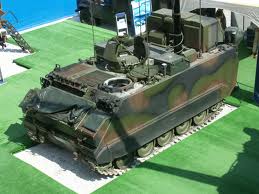
Sasha Brown - Posts: 3426
- Joined: Sat Jan 20, 2007 4:46 pm
I understand the discussion. Those location areas need to be large enough that exploration is possible. Go to Hoover dam, for example, and that area needs to encompass the dam and enough area around it so that content can be "hidden" around waiting to be discovered. I see areas the size of parking lots as pointless. Large areas with potential for exploration is the only way I'd accept a FO1/2 map system.
How about something like Mass Effect... 4 or 5 large, open cities or developed areas to explore, each of them roughly the size of Point Lookout, and then a few dozen random "wasteland areas" which are mostly just destroyed desert, but with rare and interesting encounters to be had, either random or scripted?
Of course, most people complained about that in Mass Effect, so I don't think anyone would jump on the idea.
-

Trista Jim - Posts: 3308
- Joined: Sat Aug 25, 2007 10:39 pm
I'd enjoy Fallout New Vegas to be more focused on Raider's, Slaver's, Mercenaries, Gang's. Those sort of things. Fallout 3 was heavily focused on Super Mutants, BoS and Enclave so i'd like something different.
-

Sun of Sammy - Posts: 3442
- Joined: Mon Oct 22, 2007 3:38 pm
How about something like Mass Effect... 4 or 5 large, open cities or developed areas to explore, each of them roughly the size of Point Lookout, and then a few dozen random "wasteland areas" which are mostly just destroyed desert, but with rare and interesting encounters to be had, either random or scripted?
Of course, most people complained about that in Mass Effect, so I don't think anyone would jump on the idea.
Of course, most people complained about that in Mass Effect, so I don't think anyone would jump on the idea.
Well, why not several large, open cities, and a mass of open world wasteland to explore as well? There's no reason why we can't have a FO1 style overland map with large areas under the triangles. Small areas are fine, as long as they are in addition to large open areas.
What I don't want to see are FO1 size play areas that can be explored completely in minutes. Take FO2 for example. Modoc-GhostfFarm-VC-Gecko-Raiders could all be a single FO3 style open area, containing all the current quests AND lost of open area in between for exploring. You would use the overland map to travel from the VC area to the Arroyo-Den-Toxic caves area, or the Broken Hills-Redding-New Reno area, etc.
-
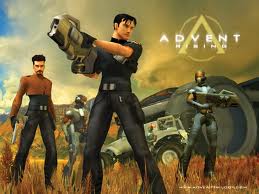
Manuela Ribeiro Pereira - Posts: 3423
- Joined: Fri Nov 17, 2006 10:24 pm
Small and confined is the problem here, for folks who want to explore. If small and confined describes FO1/2 aareas, then forget it. If small and confined equates to Point lookout, then that's fine.
Actually, I was considering "small and confined" to mean Fallout 3-sized areas...
Compared to FO2, the entire world map of FO3 is pretty small. Denser, by far, but still relatively confined.
Whichever way they go - it's really a matter of how you spread out the actual playable areas. Regardless of what you do, it's going to total about the same "playable" area - what you can explore on-foot during regular gameplay. The actual square footage of the world all together that you explore in 3D is less a matter of system resources, but the art resources you have at your disposal to create that area. Fallout 3, for example, is as big and dense as it is because they simply didn't have more time to create any more assets than that. It will be the same with New Vegas whether they go FO3-style or FO-style.
As far as exploration - even if you're travelling on an overmap, you're still exploring and finding new areas. It's just presented in a different manner. The degree to which anyone cares is pretty subjective, though. There's no inherent benefit either way - they both do the same thing.
But like I said, I'm fine with it either way. It's really just a matter of how big an area they want to cover. If I can get everywhere on foot, that's fine. If it means going through an overmap interface, then that works too. It's all going to result in the same overall square footage of rendered environments, it's just about how they're all connected.
-
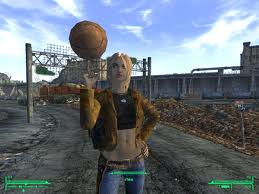
Blessed DIVA - Posts: 3408
- Joined: Thu Jul 13, 2006 12:09 am
What I don't want to see are FO1 size play areas that can be explored completely in minutes.
I find that an odd sentiment considering that you can go from one side of Fallout 3's "world map" to the other in sixteen minutes, and not even one in-game day.
-

Alba Casas - Posts: 3478
- Joined: Tue Dec 12, 2006 2:31 pm
Actually, I was considering "small and confined" to mean Fallout 3-sized areas...
Compared to FO2, the entire world map of FO3 is pretty small. Denser, by far, but still relatively confined.
Whichever way they go - it's really a matter of how you spread out the actual playable areas. Regardless of what you do, it's going to total about the same "playable" area - what you can explore on-foot during regular gameplay. The actual square footage of the world all together that you explore in 3D is less a matter of system resources, but the art resources you have at your disposal to create that area. Fallout 3, for example, is as big and dense as it is because they simply didn't have more time to create any more assets than that. It will be the same with New Vegas whether they go FO3-style or FO-style.
As far as exploration - even if you're travelling on an overmap, you're still exploring and finding new areas. It's just presented in a different manner. The degree to which anyone cares is pretty subjective, though. There's no inherent benefit either way - they both do the same thing.
But like I said, I'm fine with it either way. It's really just a matter of how big an area they want to cover. If I can get everywhere on foot, that's fine. If it means going through an overmap interface, then that works too. It's all going to result in the same overall square footage of rendered environments, it's just about how they're all connected.
Compared to FO2, the entire world map of FO3 is pretty small. Denser, by far, but still relatively confined.
Whichever way they go - it's really a matter of how you spread out the actual playable areas. Regardless of what you do, it's going to total about the same "playable" area - what you can explore on-foot during regular gameplay. The actual square footage of the world all together that you explore in 3D is less a matter of system resources, but the art resources you have at your disposal to create that area. Fallout 3, for example, is as big and dense as it is because they simply didn't have more time to create any more assets than that. It will be the same with New Vegas whether they go FO3-style or FO-style.
As far as exploration - even if you're travelling on an overmap, you're still exploring and finding new areas. It's just presented in a different manner. The degree to which anyone cares is pretty subjective, though. There's no inherent benefit either way - they both do the same thing.
But like I said, I'm fine with it either way. It's really just a matter of how big an area they want to cover. If I can get everywhere on foot, that's fine. If it means going through an overmap interface, then that works too. It's all going to result in the same overall square footage of rendered environments, it's just about how they're all connected.
just one more point, that spreading the areas out and allowing an over the map travel, is better since this way you can concentrate on your locations and not worry about the stuff in between, no need aligning and worrying about the textures you can get creative with locations miles apart and leaving what in between to our imagination, plus the travel system will give you some more epic feel not like you are jooging in the Washington ruins but like you are fixing the world bla bla bla ...
-

Rudy Paint fingers - Posts: 3416
- Joined: Sun Nov 11, 2007 1:52 am
I find that an odd sentiment considering that you can go from one side of Fallout 3's "world map" to the other in sixteen minutes, and not even one in-game day.
Yet I challenge you to find every location...or just the ones with map markers in that time. If you didn't catch it, the point is EXPLORING, not running from edge to edge.
-

T. tacks Rims - Posts: 3447
- Joined: Wed Oct 10, 2007 10:35 am
I find that an odd sentiment considering that you can go from one side of Fallout 3's "world map" to the other in sixteen minutes, and not even one in-game day.
i find it odd since he compares a two design implementations, one from FP open world game of a recent game and the other from a decade old game that can fit into 10+ diskettes.
-

Lucky Girl - Posts: 3486
- Joined: Wed Jun 06, 2007 4:14 pm
Actually, I was considering "small and confined" to mean Fallout 3-sized areas...
Small and confined, to me, is something like Gecko in FO2. There are a couple areas of that town...4, I think, and there are plenty of quests there, but there is very little to explore. A similar area in FO3 might be one of the downtown sections, but even then, there just seems to be more exploration value in the FO3 section. Less quests to be sure, but more to explore.
Compared to FO2, the entire world map of FO3 is pretty small. Denser, by far, but still relatively confined.
Again, not talkinga bout physical space per se, but the potential for exploring and finding surprises.
Whichever way they go - it's really a matter of how you spread out the actual playable areas. Regardless of what you do, it's going to total about the same "playable" area - what you can explore on-foot during regular gameplay. The actual square footage of the world all together that you explore in 3D is less a matter of system resources, but the art resources you have at your disposal to create that area. Fallout 3, for example, is as big and dense as it is because they simply didn't have more time to create any more assets than that. It will be the same with New Vegas whether they go FO3-style or FO-style.
Apparantly the game was to be much larger, and that area was reduced. Too bad for me, I guess. However, the bigger the open area, the better the exploring becomes. This is only true, however, if you can walk every part of the area...look in every building, behind every rock. It's not enough to have access to an area. The area has to be large enough to hide things in. More on the comment below:
As far as exploration - even if you're travelling on an overmap, you're still exploring and finding new areas. It's just presented in a different manner. The degree to which anyone cares is pretty subjective, though. There's no inherent benefit either way - they both do the same thing.
No, It's not.
The places one discovers are meta-places...like Den, or NCR. That's fun in a limited way, but to me it's very limited. That's it, except for random encounters. If you were to go through every square of the FO2 overland map, you owuld find a set number of meta-places and, aside from random encounters, "dropping out of warp" onto the play area yields one of a handful of set-piece, empty areas. In FO3, you may find a raider hideout, or a sewer grate, or a vault, or a building...all meta-areas with real content. You can choose how to appraoch this content...ignore it, or circle around for a better look, etc.
But like I said, I'm fine with it either way. It's really just a matter of how big an area they want to cover. If I can get everywhere on foot, that's fine. If it means going through an overmap interface, then that works too. It's all going to result in the same overall square footage of rendered environments, it's just about how they're all connected.
If that square footage is broken down in to chunks that are too small to hide content, it's going to be a gamebreaker for anyone who apporaches this game as an open, sandbox game. That sort of thing is not the Beth way, for better or worse. FO3 is a Beth game: Wide open, hidden content, contiguous play area (generally) and overland map fast travel. I would expect, and require, nothing less. Now FO:NV is an Obsidian game, and they are not known for their wide open areas. They are more likely to channel you towards their story content. There's a good chance that i will not get _what I want_ from FO:NV. That doesn't bother me as much as it usually would, because I would expect FO4 to be more in line with the typical Beth open sandbox architecture.
-

Undisclosed Desires - Posts: 3388
- Joined: Fri Mar 02, 2007 4:10 pm
@Kjarista:
Okay, I think I get what you're going at. I was just coming at it from a different angle. I'm a little more "meta" with my gaming, anyway - travelling by overmap and finding stuff or physically coming across things is pretty much the same to me. You have your preferences, though, and I can see the appeal in that as well.
Yeah, I'd expect nothing less of exactly the level design Bethesda has always done for a Fallout 4. That's one of their strengths, after all. Realistically, I think I'm going to be suprised if New Vegas splits the content up with the overmap.
Okay, I think I get what you're going at. I was just coming at it from a different angle. I'm a little more "meta" with my gaming, anyway - travelling by overmap and finding stuff or physically coming across things is pretty much the same to me. You have your preferences, though, and I can see the appeal in that as well.
Yeah, I'd expect nothing less of exactly the level design Bethesda has always done for a Fallout 4. That's one of their strengths, after all. Realistically, I think I'm going to be suprised if New Vegas splits the content up with the overmap.
-

sally coker - Posts: 3349
- Joined: Wed Jul 26, 2006 7:51 pm
Less quests to be sure, but more to explore.
Well, I don't really find much of an appeal in just exploring for the sake of exploring (although I somewhat understand why you do), with nothing to find in most locations other than just some enemies and loot. I'd prefer more locations with people to talk to and meaningful stuff to do. Which is why most of the locations in FO3 are boring filler to me.
-

x_JeNnY_x - Posts: 3493
- Joined: Wed Jul 05, 2006 3:52 pm
I did not like the original Fallout node based traveling system at all. Sure, most of the Earth is a wasteland, and the map of Fallout 1 and 2 represented that well, but that doesn't translate to fun gameplay. I felt more confined in Fallout 1 and 2 then I do in Fallout 3 because there were only certain self-contained areas that gameplay took place in, everywhere else was dead blasted sand.
It all comes down to the scope of the game. Fallout 3 was focused on Washington D.C., so continuous world system was appropriate. If New Vegas encompasses a large area, the continuous world system would be inappropriate. In this case, I would imagine that the game be composed of Point Lookout sized play areas sprinkled about an overmap; fast travel would be a necessity. They could fill the space between the play areas, but that would be unnecessary as well as huge waste of time.
Would it be similar to the way Bethesda is handling the DLCs? You get on a hand-cart and go to The Pitt or you get on a boat and go to Point Lookout. Each area is self contained; you can't wander out of the region without first accessing the world map and initiating "fast travel." You want to go to Rivet City or Megaton, you can't just walk there, you travel over the map. Of course, they would be more detailed to make up for the lack of a seamless world. Is this what you're thinking of?
Do you think that Fallout 1 and 2 were more of a "theme park" RPG whereas Fallout 3 is more of a "sand box" RPG?
It all comes down to the scope of the game. Fallout 3 was focused on Washington D.C., so continuous world system was appropriate. If New Vegas encompasses a large area, the continuous world system would be inappropriate. In this case, I would imagine that the game be composed of Point Lookout sized play areas sprinkled about an overmap; fast travel would be a necessity. They could fill the space between the play areas, but that would be unnecessary as well as huge waste of time.
Would it be similar to the way Bethesda is handling the DLCs? You get on a hand-cart and go to The Pitt or you get on a boat and go to Point Lookout. Each area is self contained; you can't wander out of the region without first accessing the world map and initiating "fast travel." You want to go to Rivet City or Megaton, you can't just walk there, you travel over the map. Of course, they would be more detailed to make up for the lack of a seamless world. Is this what you're thinking of?
Do you think that Fallout 1 and 2 were more of a "theme park" RPG whereas Fallout 3 is more of a "sand box" RPG?
-

roxxii lenaghan - Posts: 3388
- Joined: Wed Jul 05, 2006 11:53 am
Well, I don't really find much of an appeal in just exploring for the sake of exploring (although I somewhat understand why you do), with nothing to find in most locations other than just some enemies and loot. I'd prefer more locations with people to talk to and meaningful stuff to do. Which is why most of the locations in FO3 are boring filler to me.
Isn't there potentially a way to find a happy medium between the 2?
I most certainly wish there were many more cities within the game (F3) that offered additional sidequests and just allowed you to interact with the populace and take part in day to day survival of the wastelands tasks but I definately enjoy open world exploration also. However I don't necessarily believe that it has to be mutually exclusive to have just one or the other.
I didn't really enjoy the travelling overmap system between locations in F1-2. Mainly I just wanted to get from one town to the next in order to continue the story or explore the next new town but I found travelling between these places, for lack of a better word, boring; I usually reloaded encounters because I wanted to skip them altogether and just get to my destination.
Wouldn't it be fair to expect this game to be concentrating in the immediate area surrounding New Vegas as opposed to the quasi cross country-like treks found in Fallout 1-2? Naturally I know nothing about the game's scope yet but it feels as if the focus of the game will center around New Vegas itself, otherwise wouldn't it have been better to have the game be callled Fallout: Nevada or Fallout: MidWestern Wastes if the player will in fact travel to substantial amount of spread out locations on a constant basis?
Could be wrong of course, they maybe just called it Vegas because it's the more "cool" and recognizeable location they want buyers to think about, or the only thing worth mentioning as a standout... :shrug:
-
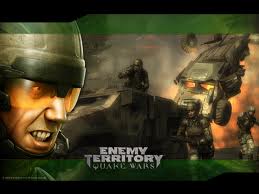
Rhysa Hughes - Posts: 3438
- Joined: Thu Nov 23, 2006 3:00 pm
Isn't there potentially a way to find a happy medium between the 2?
I think what they could do is set up a bunch of special "exploration" world spaces that are designed for random scavenging and messing around. That would give you the illusion of a seamless world if you're using node based traveling and world maps. This way, they wouldn't spend all their time trying to create enough content to fill a large gameworld but they would still give the player plenty of sandbox exploration opportunities. It would be like if Fallout 1 had special, detailed wilderness areas scattered throughout the map instead of the randomly generated wastelands.
-

Nicole Mark - Posts: 3384
- Joined: Wed Apr 25, 2007 7:33 pm
I didn't really enjoy the travelling overmap system between locations in F1-2. Mainly I just wanted to get from one town to the next in order to continue the story or explore the next new town but I found travelling between these places, for lack of a better word, boring; I usually reloaded encounters because I wanted to skip them altogether and just get to my destination.
Well, I actually found travel between locations in FO3 more boring than that, since for me this was just unnecessary filler with mostly combat-focused locations that pretty much amounted to what the random/special encounters were in the original games. And the compressed world where you can walk for miles and miles in real time in what seems like minutes destroyed immersion for me more than the more abstract representation of world map travel in FO1 and 2 ever did.
-

Chloe Mayo - Posts: 3404
- Joined: Wed Jun 21, 2006 11:59 pm
Exploration was the weak spot in Fallout 3. I don't care much if the world is in a continuous map or use a overland interactive map or both. If New Vegas is to play in a small area like Fallout 3 then it doesn't need a overland map. My issues with Fallout 3 exploration is that exploration, outside questing, just by walking in the map is boring and breaks my suspension of disbelief too much, which is not OK for a Bethesda game.
From Wikipedia:
"Suspension of disbelief or "willing suspension of disbelief" is a formula devised by the poet and aesthetic philosopher Samuel Taylor Coleridge to justify the use of fantastic or non-realistic elements in literature. Coleridge suggested that if a writer could infuse a "human interest and a semblance of truth" into a fantastic tale, the reader would suspend judgment concerning the implausibility of the narrative.
The phrase "suspension of disbelief" came to be used more loosely in the later 20th century, often used to imply that the onus was on the reader, rather than the writer, to achieve it. It might be used to refer to the willingness of the audience to overlook the limitations of a medium, so that these do not interfere with the acceptance of those premises. According to the theory, suspension of disbelief is a quid pro quo: the audience tacitly agrees to provisionally suspend their judgment in exchange for the promise of entertainment. These fictional premises may also lend to the engagement of the mind and perhaps proposition of thoughts, ideas, art and theories."
Doing this in Fallout 3 while exploring the wilderness randomly is difficult. There's an hostile encounter at every corner. It looks like there are more riders and scavengers than there are resources to ride or ways to sustain them. If this was a combat crpg like Bards Tale or a shooter like Doom then not a problem, bit this is a social crpg so the world and the societies that live in this world must be placed in the world and behave in a way they at least have the semblance of being people and not just bots put there for the only purpose of fighting the player.
Locations are a similar issue. There's too many location that exist for the sole purpose of being a "loot dungeon". With the overpopulated world it's amazing how there are so many "dungeons" full of loot. Compare this to Fallout 1/2 there are much less of these mini-dungeons and the locations that exist are more developed and usually each location has a unique background and fit's better with it's surrounding locations. The world is much more cohesive and unique.
This is what i expect from New Vegas exploration. Less "loot dungeons" and more unique locations. Less bot npcs with the single purpose of fighting the player and npcs with more social behaviors. More unique random/special encounters which happen not only in the wilderness but also inside towns similar to Baldurs Gate 2 random encounters inside the main town.
From Wikipedia:
"Suspension of disbelief or "willing suspension of disbelief" is a formula devised by the poet and aesthetic philosopher Samuel Taylor Coleridge to justify the use of fantastic or non-realistic elements in literature. Coleridge suggested that if a writer could infuse a "human interest and a semblance of truth" into a fantastic tale, the reader would suspend judgment concerning the implausibility of the narrative.
The phrase "suspension of disbelief" came to be used more loosely in the later 20th century, often used to imply that the onus was on the reader, rather than the writer, to achieve it. It might be used to refer to the willingness of the audience to overlook the limitations of a medium, so that these do not interfere with the acceptance of those premises. According to the theory, suspension of disbelief is a quid pro quo: the audience tacitly agrees to provisionally suspend their judgment in exchange for the promise of entertainment. These fictional premises may also lend to the engagement of the mind and perhaps proposition of thoughts, ideas, art and theories."
Doing this in Fallout 3 while exploring the wilderness randomly is difficult. There's an hostile encounter at every corner. It looks like there are more riders and scavengers than there are resources to ride or ways to sustain them. If this was a combat crpg like Bards Tale or a shooter like Doom then not a problem, bit this is a social crpg so the world and the societies that live in this world must be placed in the world and behave in a way they at least have the semblance of being people and not just bots put there for the only purpose of fighting the player.
Locations are a similar issue. There's too many location that exist for the sole purpose of being a "loot dungeon". With the overpopulated world it's amazing how there are so many "dungeons" full of loot. Compare this to Fallout 1/2 there are much less of these mini-dungeons and the locations that exist are more developed and usually each location has a unique background and fit's better with it's surrounding locations. The world is much more cohesive and unique.
This is what i expect from New Vegas exploration. Less "loot dungeons" and more unique locations. Less bot npcs with the single purpose of fighting the player and npcs with more social behaviors. More unique random/special encounters which happen not only in the wilderness but also inside towns similar to Baldurs Gate 2 random encounters inside the main town.
-
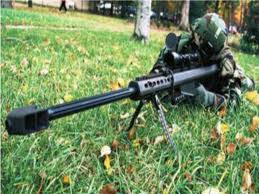
Eileen Collinson - Posts: 3208
- Joined: Thu Dec 28, 2006 2:42 am
Hope Bethesda uses Image Metrics for this game.
-

Isaiah Burdeau - Posts: 3431
- Joined: Mon Nov 26, 2007 9:58 am
Well, I don't really find much of an appeal in just exploring for the sake of exploring (although I somewhat understand why you do), with nothing to find in most locations other than just some enemies and loot. I'd prefer more locations with people to talk to and meaningful stuff to do. Which is why most of the locations in FO3 are boring filler to me.
I know you don't. However, it is possible to have both.
-

Katie Samuel - Posts: 3384
- Joined: Tue Oct 10, 2006 5:20 am
Exploration was the weak spot in Fallout 3. I don't care much if the world is in a continuous map or use a overland interactive map or both. If New Vegas is to play in a small area like Fallout 3 then it doesn't need a overland map. My issues with Fallout 3 exploration is that exploration, outside questing, just by walking in the map is boring and breaks my suspension of disbelief too much, which is not OK for a Bethesda game.
I'm sorry to be blunt, but I find that to be ridiculous. I'm going to respond to the rest of your post generally.
Most of the locations in FO3 are not loot dungeons, but rather little snippets of the stories of struggle to come to grips with the wasteland. There are a lot of suicides and a lot of what I would call crime scenes. A skeleton and a blood stain on the wall. What happened here? A Skeleton in a bathtub with a toaster, or a gun and booze bottles. Skeletons all over the place, bloodstains everywhere. Skells in "crow cage...
If you don't like to find these places and ponder what may have happened there, then perhaps you are not an explorer. Exploration is more than finding the next quest hub or loot dungeon as you call it. Exploring is more than finding a location. When one explores, one is not only looking for location, but also for lore. As you explore, you build up a history of how the world works...how different types of people learned to cope with the reality of the world...or chose not to cope. You find winners and losers, hope and hopelessness. The strength of FO3 is the storytelling, in that it's done in a way that benefits explorers.
We are always talking about the demise of the classic RPG. What we don't much talk about is the demise of good literature...of SUBTILE storytelling. This world of mass media and instant gratification has darn near destroyed the art of the developing story. Everyone wants everything instantly now, with no reflection required, and if they don't get it, they aren't interested in it.
To me, these little slices of life go a long way in making the FO3 world credible and complete. Sure, there are several things that don't make sense: One accepts these things or not, as they see fit. Opinions on which aspects are important for suspension of disbelief deffer. To me, I'd rather find these little human dramas than have huge numbers of quests, or perfect economies, or precise physics. To this extent, FO3 is the best Beth game so far. There is an awful lot to find in the Wastes, and there is an awful lot of human interest storytelling going on.
Too bad that it's lost on most people.
-

Strawberry - Posts: 3446
- Joined: Thu Jul 05, 2007 11:08 am
Yet I challenge you to find every location...or just the ones with map markers in that time. If you didn't catch it, the point is EXPLORING, not running from edge to edge.
I don't play Fallout games to wander around aimlessly. I have TES for that.
-

Elizabeth Falvey - Posts: 3347
- Joined: Fri Oct 26, 2007 1:37 am
